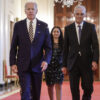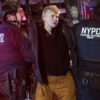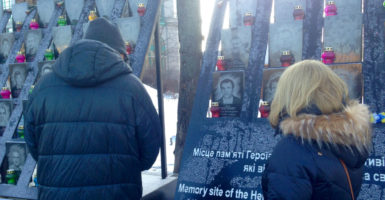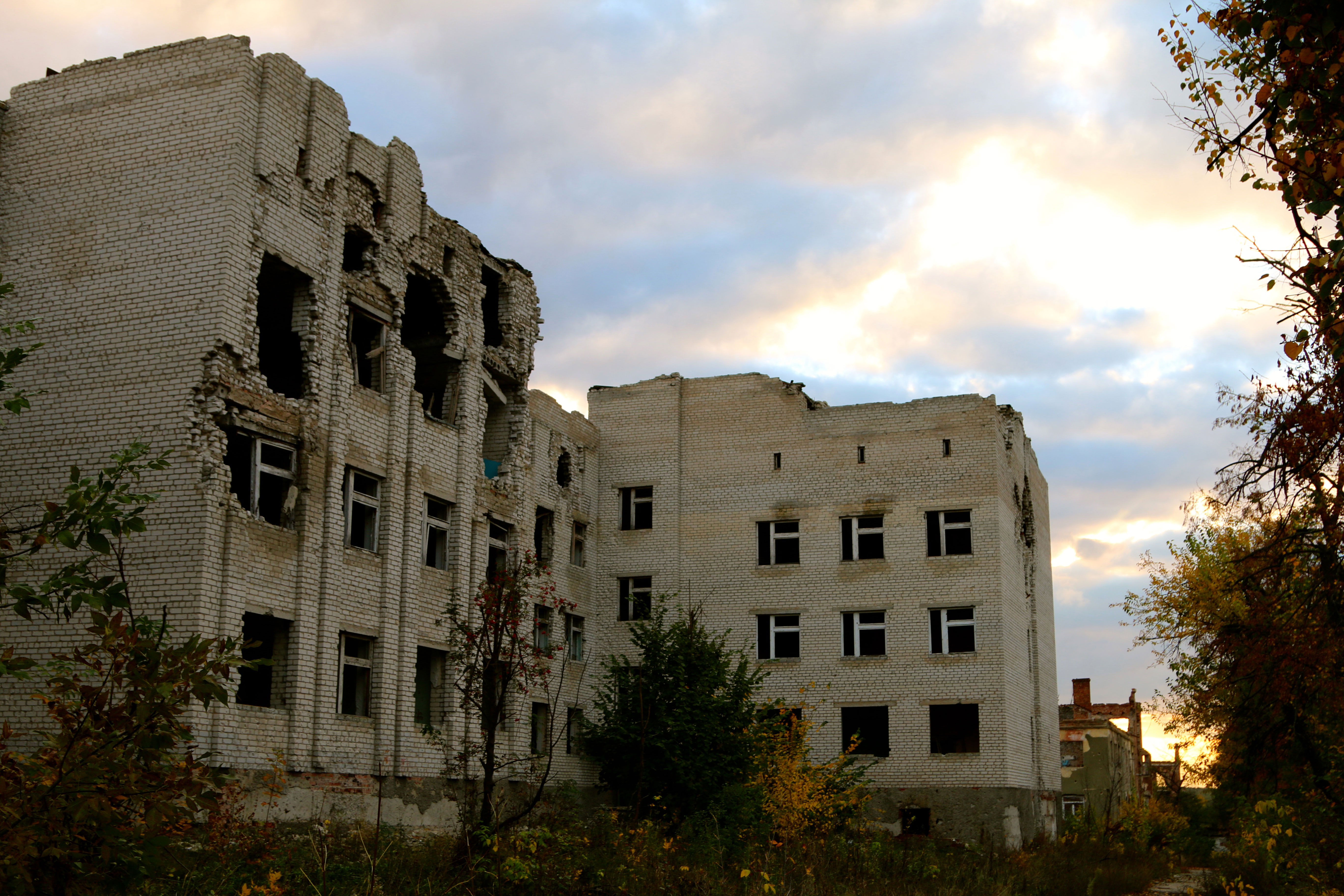KYIV, Ukraine—It’s cold, and I’m alone. I walk along Khreshchatyk, this city’s main boulevard. The street lights cast shadows on the ground, concealing patches of slippery ice and trampled snow. I walk thoughtfully and carefully, unable to clearly see the obstacles in my path.
As is so often the case in a foreign country, even in one that starts to feel like home, the compiled differences in language and life experience isolate you, making you hyper aware to minute details.
A small group of soldiers in uniform huddle outside a bar. They’re smoking cigarettes. A group of pretty young women in leather high-heeled boots and black fur coats walk past. The soldiers are young men, but they hardly seem to notice. Their war isn’t over, and they’re not yet ready to pretend like it is.
Old women sell trinkets like blue and yellow wristbands (Ukraine’s national colors) at souvenir stands on the sidewalk across the street from a Niketown store. Like when I first arrived in Ukraine three years ago, the old women’s wares include rolls of toilet paper and door mats adorned with the likeness of Russian President Vladimir Putin.
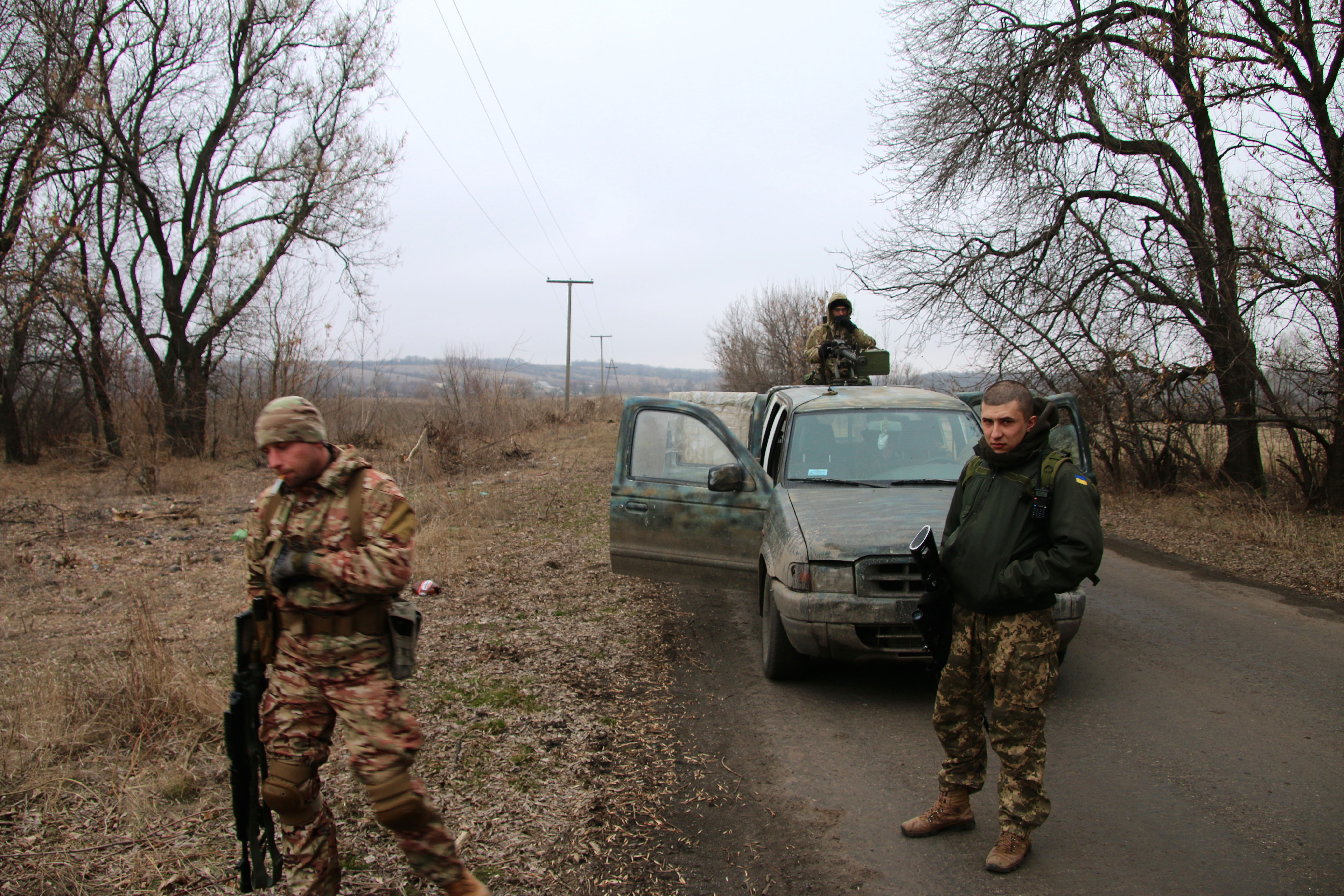
Three years after Ukraine’s 2014 revolution, a war continues in the country’s east. (Photos: Nolan Peterson/The Daily Signal)
Up in the windows of some of the apartments along Khreshchatyk, Ukrainian flags hang. Ukraine is, by the way, the only country outside of the United States where I have observed such an ubiquitous display of the national colors.
There are also a few red and black flags of Ukrainian partisan groups, which fought against both the Nazis and the Red Army in World War II. Reminders of this country’s tragic history trapped between the armies of Adolf Hitler and Joseph Stalin in the no man’s land of the deadliest battlefield in the deadliest war in human history.
Today, this country remains at the front lines of the same ideological fault lines from World War II, which are reopening across Europe and the world.
In 1935, as war clouds gathered in Europe, the American author and war correspondent Ernest Hemingway wrote:
War is no longer made by simply analyzed economic forces if it ever was. War is made or planned now by individual men, demagogues and dictators who play on the patriotism of their people to mislead them into a belief in the great fallacy of war when all their vaunted reforms have failed to satisfy the people they misrule.
Background
The war is still there, even when I don’t go to it.
Nothing has changed in the past two years since the Feb. 15, 2015, cease-fire was signed. Except for what has been lost in the time in between.
More than 10,000 are now dead, almost 2 million have fled their homes. About $20 billion worth of damage to repair.
And yet, nothing has been won or lost. Although, the war hasn’t gotten any worse. And Ukrainians’ dream of a better life, free from oppression and corruption, which inspired the 2014 revolution, has not yet died.
That’s a victory, too, I suppose.
I walk along Khreshchatyk to the Maidan, Kyiv’s central square where the revolution was born three years ago. Today, on this evening, the Maidan is not crowded. Only faint, scattered clues of the revolution remain.
The only way to prevent the next world war from happening is to believe that it could.
Faded burn marks remain on the stone floor of the square, where protesters burned tires as a smoke screen from the snipers. The Trade Unions Building, which was set ablaze on Feb. 18, 2014, is still a burnt out skeleton. White panels conceal it from view. “Glory to Ukraine” is written in giant letters.
The war has become the invisible background din to life in Ukraine. You won’t notice its clues unless you purposefully pay attention for them. But the war is always there, stealthily ever-present.
There is a street performer playing guitar, somehow able to operate his fingers in the brutal cold. He plays a Ukrainian-language song about the war. A man wearing a loose-fitting, mismatched military uniform stands apart, watching. He has a bottle of horilka (Ukrainian for vodka) in his hand, from which he sips frequently. His eyes are half-closed, and he sways out of rhythm to the music, mouthing the words.
The hardest part of war is often the coming home. Wars, after all, never really end for those who fight in them. That’s just as true for this war as for any other.
Heroes
I pass through the Maidan and up the steep cobblestone street to the top of the hill overlooking the square.
The street used to be called Institutskaya Street. Now, it’s the Heroes of the Heavenly Hundred Street, a reference to the roughly 100 protesters who were killed during the revolution.
The street’s cobblestones have all been replaced. Protesters ripped them out of the ground in 2014 to build defensive barricades against the special police unit, called the Berkut, deployed against them by deposed pro-Russian President Viktor Yanukovych.
There, at the top of the street, in front of the upper entrance to the Maidan metro station, lies a memorial to the “heavenly hundred.”
At this place, on Feb. 20, 2014, snipers gunned down dozens of unarmed protestors. Today, likenesses of the fallen are etched into metal placards. Passers-by, family members, friends have left flowers and candles beside the many faces.
The fallen, memorialized at this hallowed place, comprise men and women, students and professors, 18-year-olds and 70-year-olds. Hardly the CIA-sponsored Nazis the Kremlin says they were. Rather, ordinary Ukrainians who walked head-on into gunfire to stand up for their freedom.
The price for that freedom was steep. On the ground, in the light poles, in the brittle bark-flesh of the the leafless trees—bullet holes remain.
If you’ve ever been to war, then you know this: Walking toward the sound of gunfire takes a lot of courage.
I feel the cold wind lap at my neck. I hear the click of passing heels on the stone sidewalk. The door to the metro station makes a ratcheting sound as it opens and closes. You can hear that same sound in the YouTube videos of the protestors being gunned down.
Nearby, there are fancy shops, like Cartier, Faberge, and Louis Vuitton. There’s a McDonald’s restaurant down the street across the Maidan. That’s where, during the revolution, my friend Valentyn Onyshchenko went to wash his face clean of the blood and bits of brain that spattered on him when a man standing in front of him was shot by a sniper.
Tonight, at this place where so many died three years ago, pedestrians scurry by, on their way to the metro station for the rush-hour commute home.
A man walks by, holding a child’s hand.
The veneer between civilization and barbarism is thinner than we might imagine, I think.
I am within a five-minute walk of my apartment, where my fiancee waits for me. When I get home, if I wanted to, I could order Domino’s Pizza delivery and watch a movie on Netflix through my Apple TV.
I drag my fingers over the bullet holes, as if to confirm, once again, that they are true.
People died here. The snipers shot some of the protesters in the leg. Helpless, they called to their friends to save them. Those comrades rushed up to help, only to be gunned down themselves.
Center of mass. Dead almost instantly. Their bodies fall to the earth in that faster-than-gravity way that dead men do. Like the power has been switched off. Bam, down, dead, done. Nothing dramatic or heroic about it. Just alive and then dead, without any dying in between.
That’s war. But war doesn’t belong in an evening like this, in such a city.
It seems impossible. But it’s real, it’s true. And it’s still happening just hours away. Tanks, heavy artillery, rocket attacks, snipers, trench warfare. In Europe. In 2017.
It’s still happening. People are still dying.
History Repeating
Sure, it feels good to believe that history is moving in the right direction. To retain hope that we, as a species, are better off than we were during, let’s say, World War II, two generations ago.
I think about 72-year-old Anatoli Bastriski sitting on a green bench outside his artillery-razed home in the eastern Ukrainian village of Semyonovka. It was August 2014, weeks after a battle between Ukrainian troops and combined Russian-separatist forces.
Bastriski wore a blue paddy cap and sat with one leg over the other and his arms folded across his thigh. The wall behind him was pockmarked by shrapnel. The street was mostly cleared of debris, but almost every skeleton of a home along the way was unoccupied. There was no one else on the road. The trees were stripped clean of branches and leaves, only the charred trunks survived the artillery barrage.
Bastriski, a Jew, was an infant when the Nazis occupied this part of Ukraine. His family survived the Holocaust, but lost their home in the war.
When the shells started to fall in 2014, Bastriski chose to remain in Semyonovka, riding out the battle in his basement. Even when the roof of his brick home was obliterated by artillery fire, he refused to flee.
“I was born here, and I built my home with my own hands,” Bastriski told me. “The Germans destroyed my parents’ home, and I’ll rebuild this one.”
He cracked a half-smile, shrugged his shoulders, and added, “I’d leave, but the cemetery is too far away.”
Gravity
Will future generations look back on us with the same disbelief that we “didn’t see it coming” as we now look back on those who appeased Hitler, or apologized for Stalin or Communist Chairman Mao Zedong?
We think that something like World War II could never happen to us, because, well, we’re the ones alive now. We’re different, aren’t we? We have globalization and the United Nations and the internet.
Unfortunately, though, truth has a habit of showing itself, even if we choose to ignore it.
“Americans should not take the current international order for granted,” —retired Gen. David Petraeus.
The bullet holes on the sidewalk in Kyiv. And the war, which is only a six-hour train ride away. Both reminders that, collectively, we are just treading water, fighting against the gravitational tug of history. The minute we stop kicking, we descend, quickly and easily, into those dark depths from which we thought we had escaped.
“Americans should not take the current international order for granted,” retired Gen. David Petraeus told Congress on Feb. 1. “It did not will itself into existence. We created it. Likewise, it is not naturally self-sustaining. We have sustained it. If we stop doing so, it will fray and, eventually, collapse.”
I must confess, it’s hard to believe in the inevitability of violence on a cold winter’s night in a peaceful, European capital city like Kyiv.
The McDonald’s restaurants, the cocktail bars, the fancy shops—it sure feels good to stare at shadows for a night. But the bullet holes, the war—that’s the light at my back, dimming the shadows so much that I can no longer believe in them.
One last thought. I’ve written this sentence before, but it bares repeating:
The only way to prevent the next world war from happening is to believe that it could.




